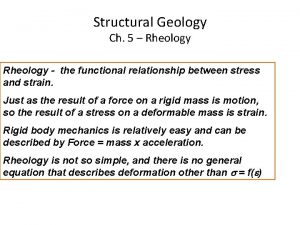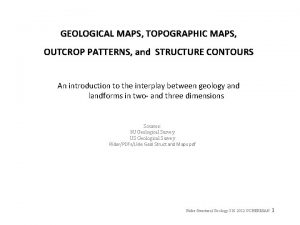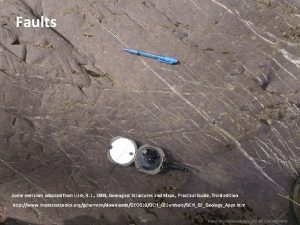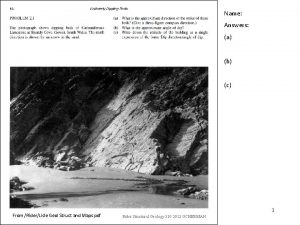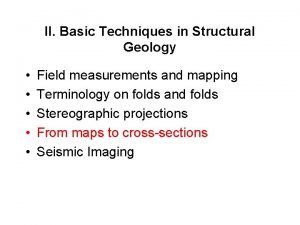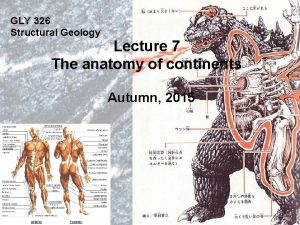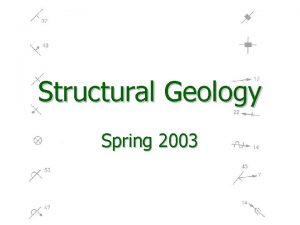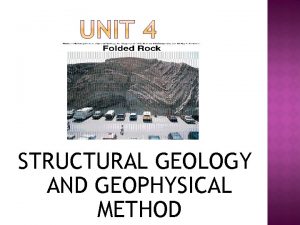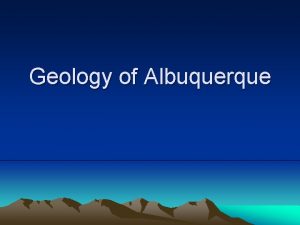Structural Geology n Structural geology is the study









- Slides: 9

Structural Geology n Structural geology is the study of rocks deformed by stress and strain n This involves trying to understand stress and strain forces to decipher its pre-deformed state

n When working in the field, Strike and Dip measurements are used to determine the orientation of rock units and other features 1) Strike – The compass direction of a line at the intersection of a geologic plane and a horizontal plane (water line) 2) Dip – The angle between the inclined plane and horizontal, perpendicular to strike

n Folds, faults, and unconformities are three main features that structural geologists examine 1) Folds occur when originally horizontal rock units deform under compressive forces. Common types of folds are anticlines and synclines.

• For every fold there is a fold axis, which is in the axial plane

• Some folds may plunge, these are called plunging folds Plunging anticlines and synclines have complex surface expressions

2) Faults are breaks in rock units were movement has occurred. There are three major types of faults 1) Normal – Hanging wall (top surface) moves down relative to the footwall (bottom surface), caused by tension (extension)

2) Reverse – Hanging wall moves up relative to the footwall, caused by compression (shortening)

3) Strike-Slip – Movement along the fault is horizontal, parallel to the strike of the fault plane. If, standing on one side of the fault, the block on the other side is displaced to the right, the fault is termed right-lateral. If the block on the other side is displaced to the left, the fault is termed left lateral Is this fault right-lateral or left-lateral? Left-lateral

3) Unconformities are surfaces where erosion has occurred and represent gaps in the geologic record. There are three types of unconformities q Angular Unconformity – An unconformity in which the upper and lower layers are not parallel q Disconformity – An unconformity in which the upper and lower layers are horizontal q Nonconformity – An unconformity in which the upper layers overlie metamorphic or igneous rocks
